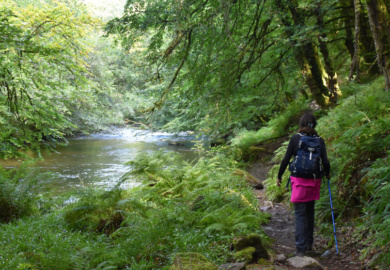What’s in a name?
To Shakespeare’s Juliet it may have no significance beyond convention but when it comes to place names, it enables us to see thousands of years into history.
When we tread paths that incorporate ancient towns and hamlets, the place name can throw a great deal of light on their history and help us to identify the features that most characterised them for our ancestors.
Many Somerset place names have their origins in Anglo-Saxon terms, often slightly amended by the time they reached the Doomsday Book, and then further evolved into current names. Places were frequently compiled of two or more words to signify prominent features in their locations, sometimes coupled with the original landowner’s name.
Over the centuries, the importance of certain aspects of the landscape has evolved as the UK has morphed away from a largely agricultural economy and if we look back at the origin of names, that becomes very evident. ‘Ham’, for example, derives from the Anglo-Saxon term for a village or hamlet; ‘’borough’ or ‘burh’ referred to a fortified place or a burial mound; ‘stoke’ to an outlying farm or village; ‘worth’ or ‘worthy’ was an enclosure, and ‘combe’ which derives from the Olde English word ‘cumb’ and the Celtic ‘cumm’, means ‘valley’.
Anglo-Saxon early settlers deliberately chose sites near fresh running water in order to have a constant source of water for cooking, cultivating and animal rearing. Consequently, the inclusion of rivers and springs is common in names. The growth in population density is also very apparent when you consider terms like ‘cot’ or ‘cote’, the Anglo-Saxon word for ‘cottage’, which was usually linked to the original owner’s name as that would be the only, or certainly most prominent dwelling in a location.
Somerset place names on our walks
An important crossroads where ancient wool-trading routes converged to cross the River Barle, Dulverton, where the walk to Hawksridge begins, means ‘the hidden ford’ in Anglo-Saxon. The settlement began life in 1084 as ‘Dieglaford utun’ (personally, I would love to see it revert to that – even if no-one could pronounce it) but by the time it was recorded in the Doomsday Book it had become ‘Dolverton’.
Tarr Steps (above), the popular beauty spot and ancient clapper bridge incorporated into a wonderful circular walk from Winsford, is simply derived from ‘tochar’ meaning ‘causeway’. Watchet (top image), a natural harbour and important Anglo-Saxon settlement, was originally named ‘Waeced’ or ‘Gwa Coed’ from the Celtic words ‘gwas’, meaning ‘under’ and ‘coed’ meaning ‘wood’.
The name Porlock (above), is a combination of the Celtic ‘port’ and the Olde English ‘loca’ meaning ‘enclosure’, so-called because it was a ‘locked port’ separated from the sea by a strip of rich alluvial land which is now marshland. Winsford (below) derives from Wain’s or Wynne’s ford and refers to the place where landowner Wain or Wynne crossed the Winn Brook at its junction with the River Exe, by way of a ford. One of the prettiest villages in Exmoor, the ford remains a focal point today, and history still permeates many of the village’s listed buildings.
For us, having an insight into the origins of a location really helps to give it a context in the landscape and to appreciate its historic significance. It’s a reminder that we are currently treading where feet and hooves have trodden for centuries before us.





